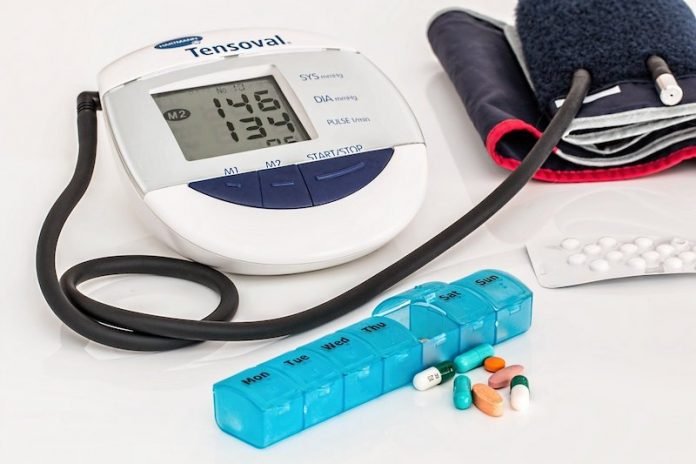
In a recent study published in Stroke, researchers found that the bottom number (diastolic blood pressure) on a blood pressure test could be important when it comes to evaluating the chance of a person having scars on their brain that could be an indicator of dementia, stroke, or falls.
The study is from the University of Miami and conducted by Michelle R. Caunca et al.
The systolic blood pressure shows how much pressure a person’s blood exerts against the artery walls when their heart beats.
The diastolic blood pressure shows how much pressure a person’s blood exerts against the artery walls while their heart rests between beats.
People with a diastolic blood pressure reading of 80 or higher are considered to have high blood pressure, according to guidelines from the American College of Cardiology and AHA.
The top number on a blood pressure test is widely viewed as the best gauge of a person’s overall risk for heart disease.
In the study, the team looked at the link between blood pressure scores and the number and location of these brain scars, called white matter lesions.
In 1,205 women and men who were 50 and older, they found people with the lowest diastolic blood pressure had fewer white matter lesions on MRI scans than those with higher diastolic blood pressure.
Previous studies have shown people with high systolic blood pressure are more likely to have the narrowed arteries that cause these lesions.
Yet this study found people with diastolic blood pressure lower than 80 had smaller white matter lesions in three regions of the brain seen on MRI compared to people with diastolic blood pressure over 90.
White matter is composed of nerve fibers that transmit messages to and from the brain that help guide muscle movement, sensation, and thinking. Lesions can block these messages, increasing the risk of falls.
These lesions also increase a person’s risk of having a stroke or developing problems with thinking and memory.
By age 60, between 10% and 20% of people have white matter lesions, according to an AHA scientific statement about the silent cerebrovascular disease. They are seen in most adults over age 90.
The team says different regions are supplied by different vessels, and certain (diseases) affect certain regions in different ways.
The specific relationship with periventricular (region) white matter lesions is important because these lesions tend to be more strongly associated with cognitive problems.
This study provides further evidence that it is important to know your blood pressure and talk to your doctor about the best treatment for you.
If you care about blood pressure health, please read studies about a common food that may help lower the risk of high blood pressure, and diabetes and this simple exercise may lower blood pressure more effectively.
For more information about high blood pressure and your health, please see recent studies about high blood pressure drugs that can actually raise blood pressure in some people and results showing that this diet could help reduce high blood pressure in older people.
Copyright © 2022 Knowridge Science Report. All rights reserved. (Updated)



